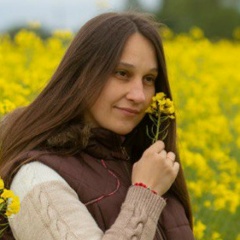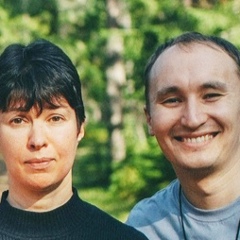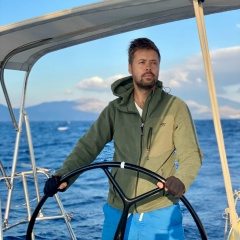А сегодня ведь день психолога. Коллеги, с праздником! ;) И пост в тему.
Посмотрели на днях с [id4207272|Юрой] «Запрещённый приём» (Sucker Punch) Зака Снайдера. Фильм смотрели не впервые (для обоих это был уже третий просмотр, и первый совместный), каждому из нас фильм очень нравится. Знаю, что отзывы критиков были разгромные после выхода фильма, отзывы знакомых, кому я рекомендовала посмотреть в своё время, ничуть не лучше...) А вот почему так, интересный вопрос. Фильм, на мой взгляд, очень крутой, в плане замысла, сюжета, режиссёрской и операторской работы, визуальных эффектов, и многого другого. И с каждым просмотром сюжет кажется всё глубже и интереснее.
Нам вот кажется, что весь фильм это прямая метафора работы с травматическими событиями. И сюжетная линия, кстати говоря, укладывается в это понимание просто идеально. Обсудим фильм в честь дня психолога? Кто смотрел?
Чтобы не утомлять длинными рассуждениями, постараюсь изложить максимально кратко наше понимание основных сюжетных блоков.
1. Начало фильма. Чёрно-белый видеоряд, 50-е годы. НЕ реальные события, а некие искажённые воспоминания/представления/фантазирование на тему какого-то травматического события. Также нам кажется, что сестра Baby Doll и она сама — не два разных человека, а один. (И как нам видится, в фильме есть много подтверждений тому, что эта часть фильма такая же фантазия, как и всё остальное, и героиня-реальный человек в фильме всего лишь одна. Скорее всего главная героиня вытесняет произошедшие с ней события, обыгрываемые в течение всего фильма в чулане, на образ сестры, реально, по всей видимости, не существовавшей.)
2. Действия, происходящие в борделе, очевидно происходят также лишь в воображении. Все девушки — это диссоциированные части личности главной героини (Sweet Pea).
3. Третий план фильма — то, что воображает Baby Doll во время танца — раскрывает собственно терапию травмы:
3.1. Первый эпизод — встреча с мудрецом (внутренним голосом, интуицией) и сражение с тремя воинами. Первый — метафора сильного страха. Второй — метафора гнева (ярости). Третий — печали (горя). Три базовые эмоции. То, что я в своей работе с клиентами прорабатываю первым делом, если речь идёт о длительной терапии. Страх, гнев и печаль. И в фильме они показаны идеально, отличить и перепутать невозможно. Потрясающе яркая метафора каждого чувства.
3.2. Второй эпизод — аллюзии на Первую Мировую войну, готические замки, явная отсылка к прошлому, тому, что было когда-то давно. Борьба с призраками прошлого (навязчивые воспоминания о прошлом, флешбеки, интрузии, вот это всё). Страх жизни (неслучайно и все, с кем сражаются девушки, мертвы, мудрец это отдельно проговаривает). Все сражении в фильме, на наш взгляд, это метафорическая проработка чего-то, здесь: страха жизни. Все попытки медбрата (а на втором плане фильма сутенера Blue) контролировать и доминировать — это метофора того, как печаль (blue в переводе с английского грусть) может пытаться подчинить себе всю жизнь.
3.3. Третий эпизод — битва с драконом. Началась после убийства малыша дракона. Огонь (месть). Чувство, сжигающее изнутри (как огонь). Попытка справиться с ним. Успешная.
3.4. Четвёртый эпизод — некое отдалённое будущее, поезд с роботами и едущей в ней термоядерной бомбой. Страх будущего, страх смерти, возможной катастрофы. Попытка всё контролировать, всё учесть (подстелить соломки), что принципиально невозможно. И именно поэтому, на мой взгляд, в этом эпизоде погибает первая из девушек.
4. Мир борделя. Побег Sweet Pea. Baby Doll встречается c High Roller (встречи с которым она отчаянно пыталась избежать весь фильм). На мой взгляд, он олицетворяет Самость главной героини. Она боялась встретиться с собой настоящей, бежала от себя, но когда эта встреча произошла (и произошла лишь благодаря появлению стратегий совладания с гневом, печалью и страхом, после проработки страха смерти и страха жизни, работы с травматическими воспоминаниями), наступило освобождение. Если High Roller понимать как мужчину или образ мужчины, который несёт зло, совершенно непонятны становятся как его слова к Baby Doll (про то, что он хочет от неё правды и принятия, больше ничего, не хочет ни к чему её принуждать, хочет, чтобы она сама согласилась принять его), так и её реакция (когда она, делая всё возможное и невозможное в течение фильма, чтобы не встретиться с ним, при встрече в течение пары минут начинает доверять ему и целует). При этом параллельно показывается успешный побег Sweet Pea и путешествие домой (кстати говоря, к маме, которая у неё жива, а вовсе не мертва как мама Baby Doll, как показывалось в первых минутах фильма) в автобусе, которым управляет герой, символизирующий архетип мудреца или внутреннего голоса, интуиции. Неслучайно именно он помогает Sweet Pea избежать допроса полицейских и девушка может просто молчать, а водитель говорит всё за неё.
Нам окончание фильма видится очень позитивным, а вовсе не драматическим, как это можно увидеть на первом плане. Героиня отправляется в новое путешествие, воссоединив все свои части, разрешив все бывшие внутренние противоречия, найдя свою самость и прислушиваясь к своему внутреннему голосу.
Фильм настолько интересный, что совсем кратко, как я ни старалась, не получилось. ) Упомянула, конечно, не все моменты. (Так, например, врач и мадам Gorski — образ внутреннего критика.)
#психология #травма #терапия #SuckerPunch
Посмотрели на днях с [id4207272|Юрой] «Запрещённый приём» (Sucker Punch) Зака Снайдера. Фильм смотрели не впервые (для обоих это был уже третий просмотр, и первый совместный), каждому из нас фильм очень нравится. Знаю, что отзывы критиков были разгромные после выхода фильма, отзывы знакомых, кому я рекомендовала посмотреть в своё время, ничуть не лучше...) А вот почему так, интересный вопрос. Фильм, на мой взгляд, очень крутой, в плане замысла, сюжета, режиссёрской и операторской работы, визуальных эффектов, и многого другого. И с каждым просмотром сюжет кажется всё глубже и интереснее.
Нам вот кажется, что весь фильм это прямая метафора работы с травматическими событиями. И сюжетная линия, кстати говоря, укладывается в это понимание просто идеально. Обсудим фильм в честь дня психолога? Кто смотрел?
Чтобы не утомлять длинными рассуждениями, постараюсь изложить максимально кратко наше понимание основных сюжетных блоков.
1. Начало фильма. Чёрно-белый видеоряд, 50-е годы. НЕ реальные события, а некие искажённые воспоминания/представления/фантазирование на тему какого-то травматического события. Также нам кажется, что сестра Baby Doll и она сама — не два разных человека, а один. (И как нам видится, в фильме есть много подтверждений тому, что эта часть фильма такая же фантазия, как и всё остальное, и героиня-реальный человек в фильме всего лишь одна. Скорее всего главная героиня вытесняет произошедшие с ней события, обыгрываемые в течение всего фильма в чулане, на образ сестры, реально, по всей видимости, не существовавшей.)
2. Действия, происходящие в борделе, очевидно происходят также лишь в воображении. Все девушки — это диссоциированные части личности главной героини (Sweet Pea).
3. Третий план фильма — то, что воображает Baby Doll во время танца — раскрывает собственно терапию травмы:
3.1. Первый эпизод — встреча с мудрецом (внутренним голосом, интуицией) и сражение с тремя воинами. Первый — метафора сильного страха. Второй — метафора гнева (ярости). Третий — печали (горя). Три базовые эмоции. То, что я в своей работе с клиентами прорабатываю первым делом, если речь идёт о длительной терапии. Страх, гнев и печаль. И в фильме они показаны идеально, отличить и перепутать невозможно. Потрясающе яркая метафора каждого чувства.
3.2. Второй эпизод — аллюзии на Первую Мировую войну, готические замки, явная отсылка к прошлому, тому, что было когда-то давно. Борьба с призраками прошлого (навязчивые воспоминания о прошлом, флешбеки, интрузии, вот это всё). Страх жизни (неслучайно и все, с кем сражаются девушки, мертвы, мудрец это отдельно проговаривает). Все сражении в фильме, на наш взгляд, это метафорическая проработка чего-то, здесь: страха жизни. Все попытки медбрата (а на втором плане фильма сутенера Blue) контролировать и доминировать — это метофора того, как печаль (blue в переводе с английского грусть) может пытаться подчинить себе всю жизнь.
3.3. Третий эпизод — битва с драконом. Началась после убийства малыша дракона. Огонь (месть). Чувство, сжигающее изнутри (как огонь). Попытка справиться с ним. Успешная.
3.4. Четвёртый эпизод — некое отдалённое будущее, поезд с роботами и едущей в ней термоядерной бомбой. Страх будущего, страх смерти, возможной катастрофы. Попытка всё контролировать, всё учесть (подстелить соломки), что принципиально невозможно. И именно поэтому, на мой взгляд, в этом эпизоде погибает первая из девушек.
4. Мир борделя. Побег Sweet Pea. Baby Doll встречается c High Roller (встречи с которым она отчаянно пыталась избежать весь фильм). На мой взгляд, он олицетворяет Самость главной героини. Она боялась встретиться с собой настоящей, бежала от себя, но когда эта встреча произошла (и произошла лишь благодаря появлению стратегий совладания с гневом, печалью и страхом, после проработки страха смерти и страха жизни, работы с травматическими воспоминаниями), наступило освобождение. Если High Roller понимать как мужчину или образ мужчины, который несёт зло, совершенно непонятны становятся как его слова к Baby Doll (про то, что он хочет от неё правды и принятия, больше ничего, не хочет ни к чему её принуждать, хочет, чтобы она сама согласилась принять его), так и её реакция (когда она, делая всё возможное и невозможное в течение фильма, чтобы не встретиться с ним, при встрече в течение пары минут начинает доверять ему и целует). При этом параллельно показывается успешный побег Sweet Pea и путешествие домой (кстати говоря, к маме, которая у неё жива, а вовсе не мертва как мама Baby Doll, как показывалось в первых минутах фильма) в автобусе, которым управляет герой, символизирующий архетип мудреца или внутреннего голоса, интуиции. Неслучайно именно он помогает Sweet Pea избежать допроса полицейских и девушка может просто молчать, а водитель говорит всё за неё.
Нам окончание фильма видится очень позитивным, а вовсе не драматическим, как это можно увидеть на первом плане. Героиня отправляется в новое путешествие, воссоединив все свои части, разрешив все бывшие внутренние противоречия, найдя свою самость и прислушиваясь к своему внутреннему голосу.
Фильм настолько интересный, что совсем кратко, как я ни старалась, не получилось. ) Упомянула, конечно, не все моменты. (Так, например, врач и мадам Gorski — образ внутреннего критика.)
#психология #травма #терапия #SuckerPunch
But today is a psychologist’s day. Colleagues, happy holiday! ;) And a post in the subject.
We watched the other day with [id4207272 | Yura] "Zak Snyder's Prohibited Reception" (Sucker Punch). The film was not watched for the first time (for both it was the third viewing, and the first joint), each of us really likes the film. I know that the reviews of critics were devastating after the release of the film, the reviews of acquaintances whom I recommended to watch at one time were no better ...) But why so, an interesting question. The film, in my opinion, is very cool in terms of design, plot, directorial and cameraman work, visual effects, and much more. And with each viewing, the plot seems deeper and more interesting.
It seems to us that the whole film is a direct metaphor for working with traumatic events. And the storyline, by the way, fits into this understanding is just perfect. Let's discuss the film in honor of the psychologist’s day? Who was watching?
In order not to bore with long reasoning, I will try to state as briefly as possible our understanding of the main plot blocks.
1. The beginning of the film. Black and white footage, 50s. NOT real events, but some distorted memories / ideas / fantasies on the topic of some traumatic event. It also seems to us that the Baby Doll sister and herself are not two different people, but one. (And as we see it, there is a lot of evidence in the film that this part of the film is just as much a fantasy as everything else, and the real-life heroine in the film is only one. Most likely, the main character crowds out the events that happened to her, played out during of the entire film in the closet, to the image of a sister who, apparently, did not exist.)
2. The actions taking place in a brothel obviously also occur only in the imagination. All the girls are dissociated parts of the personality of the main character (Sweet Pea).
3. The third plan of the film - what Baby Doll imagines during the dance - reveals the actual trauma therapy:
3.1. The first episode is a meeting with a sage (inner voice, intuition) and a battle with three warriors. The first is a metaphor for intense fear. The second is a metaphor of anger (rage). The third is sorrows (grief). Three basic emotions. What I’m working on with clients first of all when it comes to long-term therapy. Fear, anger and sadness. And in the film they are shown perfectly, it is impossible to distinguish and confuse. A stunningly vivid metaphor for every feeling.
3.2. The second episode - allusions to the First World War, Gothic castles, a clear reference to the past, to what was once upon a time. Fighting the ghosts of the past (obsessive memories of the past, flashbacks, intrusions, that's all). Fear of life (it is no coincidence that everyone with whom the girls fight is dead, the sage speaks it separately). All the battles in the film, in our opinion, is a metaphorical study of something here: the fear of life. All attempts by a nurse (and in the background of the movie Pimp Blue) to control and dominate - this is a metaphor for how sadness (blue translated from English sadness) can try to subjugate your whole life.
3.3. The third episode is the battle with the dragon. Started after killing the baby dragon. Fire (revenge). A feeling burning inside (like fire). Trying to handle it. Successful.
3.4. The fourth episode is a kind of distant future, a train with robots and a thermonuclear bomb riding in it. Fear of the future, fear of death, possible disaster. An attempt to control everything, to take everything into account (to lay straws), which is fundamentally impossible. And that is why, in my opinion, the first of the girls dies in this episode.
4. The world of the brothel. Escape the Sweet Pea. Baby Doll meets with High Roller (meeting whom she was desperately trying to avoid the whole movie). In my opinion, he personifies the Self of the main character. She was afraid to meet the real one, fled from herself, but when this meeting took place (and it happened only due to the emergence of strategies for coping with anger, sadness and fear, after working through the fear of death and the fear of life, working with traumatic memories), liberation came. If High Roller is understood as a man or the image of a man who is evil, it becomes completely incomprehensible how his words to Baby Doll (about the fact that he wants truth from her and acceptance, nothing more, doesn’t want to force her to anything, wants to she herself agreed to accept him), as well as her reaction (when she, doing everything possible and impossible during the film so as not to meet with him, when meeting for a couple of minutes, begins to trust him and kisses). At the same time, Sweet Pea’s successful escape and journey home (by the way, to her mother, who is alive and not dead like a Baby Doll’s mother, as it was shown in the first minutes of the film) are shown on the bus, which is controlled by a hero, symbolizing the archetype of the sage or inner voice, intuition. It is no coincidence that he helps Sweet Pea to avoid interrogation of police officers and the girl can just be silent, and the driver says everything for her.
We see the end of the film as very positive, and not at all dramatic, as you can see in the foreground. The heroine sets off on a new journey, reuniting the sun
We watched the other day with [id4207272 | Yura] "Zak Snyder's Prohibited Reception" (Sucker Punch). The film was not watched for the first time (for both it was the third viewing, and the first joint), each of us really likes the film. I know that the reviews of critics were devastating after the release of the film, the reviews of acquaintances whom I recommended to watch at one time were no better ...) But why so, an interesting question. The film, in my opinion, is very cool in terms of design, plot, directorial and cameraman work, visual effects, and much more. And with each viewing, the plot seems deeper and more interesting.
It seems to us that the whole film is a direct metaphor for working with traumatic events. And the storyline, by the way, fits into this understanding is just perfect. Let's discuss the film in honor of the psychologist’s day? Who was watching?
In order not to bore with long reasoning, I will try to state as briefly as possible our understanding of the main plot blocks.
1. The beginning of the film. Black and white footage, 50s. NOT real events, but some distorted memories / ideas / fantasies on the topic of some traumatic event. It also seems to us that the Baby Doll sister and herself are not two different people, but one. (And as we see it, there is a lot of evidence in the film that this part of the film is just as much a fantasy as everything else, and the real-life heroine in the film is only one. Most likely, the main character crowds out the events that happened to her, played out during of the entire film in the closet, to the image of a sister who, apparently, did not exist.)
2. The actions taking place in a brothel obviously also occur only in the imagination. All the girls are dissociated parts of the personality of the main character (Sweet Pea).
3. The third plan of the film - what Baby Doll imagines during the dance - reveals the actual trauma therapy:
3.1. The first episode is a meeting with a sage (inner voice, intuition) and a battle with three warriors. The first is a metaphor for intense fear. The second is a metaphor of anger (rage). The third is sorrows (grief). Three basic emotions. What I’m working on with clients first of all when it comes to long-term therapy. Fear, anger and sadness. And in the film they are shown perfectly, it is impossible to distinguish and confuse. A stunningly vivid metaphor for every feeling.
3.2. The second episode - allusions to the First World War, Gothic castles, a clear reference to the past, to what was once upon a time. Fighting the ghosts of the past (obsessive memories of the past, flashbacks, intrusions, that's all). Fear of life (it is no coincidence that everyone with whom the girls fight is dead, the sage speaks it separately). All the battles in the film, in our opinion, is a metaphorical study of something here: the fear of life. All attempts by a nurse (and in the background of the movie Pimp Blue) to control and dominate - this is a metaphor for how sadness (blue translated from English sadness) can try to subjugate your whole life.
3.3. The third episode is the battle with the dragon. Started after killing the baby dragon. Fire (revenge). A feeling burning inside (like fire). Trying to handle it. Successful.
3.4. The fourth episode is a kind of distant future, a train with robots and a thermonuclear bomb riding in it. Fear of the future, fear of death, possible disaster. An attempt to control everything, to take everything into account (to lay straws), which is fundamentally impossible. And that is why, in my opinion, the first of the girls dies in this episode.
4. The world of the brothel. Escape the Sweet Pea. Baby Doll meets with High Roller (meeting whom she was desperately trying to avoid the whole movie). In my opinion, he personifies the Self of the main character. She was afraid to meet the real one, fled from herself, but when this meeting took place (and it happened only due to the emergence of strategies for coping with anger, sadness and fear, after working through the fear of death and the fear of life, working with traumatic memories), liberation came. If High Roller is understood as a man or the image of a man who is evil, it becomes completely incomprehensible how his words to Baby Doll (about the fact that he wants truth from her and acceptance, nothing more, doesn’t want to force her to anything, wants to she herself agreed to accept him), as well as her reaction (when she, doing everything possible and impossible during the film so as not to meet with him, when meeting for a couple of minutes, begins to trust him and kisses). At the same time, Sweet Pea’s successful escape and journey home (by the way, to her mother, who is alive and not dead like a Baby Doll’s mother, as it was shown in the first minutes of the film) are shown on the bus, which is controlled by a hero, symbolizing the archetype of the sage or inner voice, intuition. It is no coincidence that he helps Sweet Pea to avoid interrogation of police officers and the girl can just be silent, and the driver says everything for her.
We see the end of the film as very positive, and not at all dramatic, as you can see in the foreground. The heroine sets off on a new journey, reuniting the sun

У записи 9 лайков,
1 репостов,
403 просмотров.
1 репостов,
403 просмотров.
Эту запись оставил(а) на своей стене Наталья Владыкина






























